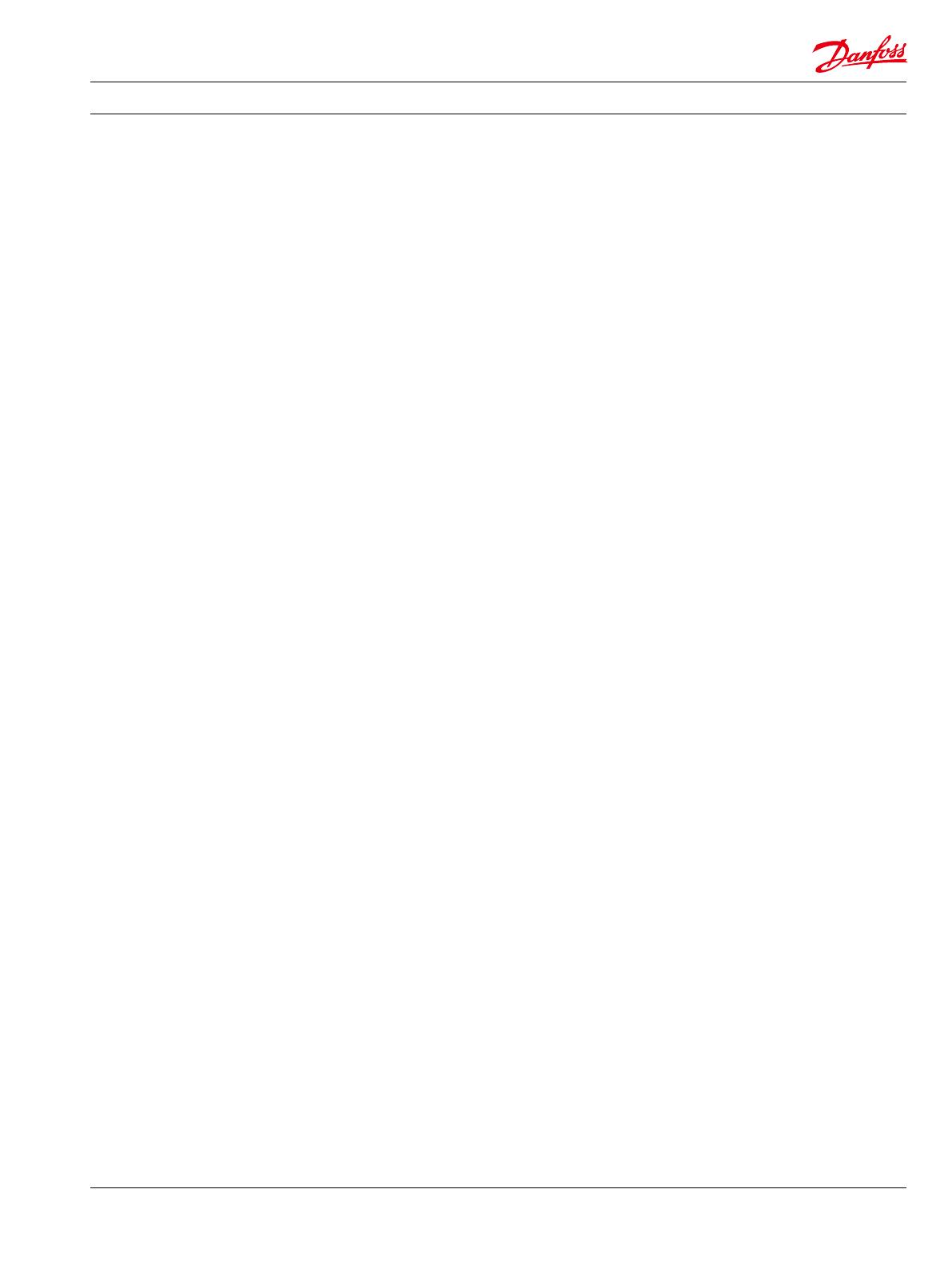
Technical Information Series T90 Transit Mixer Drive System
L1207419 • Rev BA • October 2014 9
Temperature and
Viscosity
The high temperature limits apply at the hottest point in the transmission, which is
normally the motor case drain. The system should generally be run at or below the
quoted rated temperature.The maximum intermittent temperature is based on
material properties and should never be exceeded.
Cold oil will generally not affect the durability of the transmission components, but
it may affect the ability of oil to flow and transmit power; therefore temperatures
should remain 16 °C [30 °F] above the pour point of the hydraulic fluid.The minimum
temperature relates to the physical properties of component materials. Size heat
exchangers to keep the fluid within these limits. Danfoss recommends testing to verify
that these temperature limits are not exceeded.
For maximum efficiency and bearing life, ensure the fluid viscosity remains in the
recommended range. The minimum viscosity should be encountered only during
brief occasions of maximum ambient temperature and severe duty cycle operation.
The maximum viscosity should be encountered only at cold start.
To prevent premature wear, ensure only clean fluid enters the hydrostatic transmission
circuit. A filter capable of controlling the fluid cleanliness to ISO 4406 class 22/18/13
(SAE J1165) or better, under normal operating conditions, is recommended.
These cleanliness levels can not be applied for hydraulic fluid residing in the component
housing/case or any other cavity after transport.
The selection of a filter depends on a number of factors including the contaminant
ingression rate, the generation of contaminants in the system, the required fluid
cleanliness, and the desired maintenance interval. Filters are selected to meet the
above requirements using rating parameters of efficiency and capacity.
Filter efficiency can be measured with a Beta ratio¹ (βX). For simple suction-filtered
closed circuit transmissions and open circuit transmissions with return line filtration,
a filter with a β-ratio within the range of β
35-45
= 75 (β
10
≥ 2) or better has been found to
be satisfactory.
The hydrostatic system reservoir should accommodate maximum volume changes
during all system operating modes and promote de-aeration of the fluid as it
passes through the tank. A suggested minimum total reservoir volume is 5⁄8 of the
maximum charge pump flow per minute with a minimum fluid volume equal to ½ of
the maximum charge pump flow per minute. This allows 30 seconds fluid dwell for
removing entrained air at the maximum return flow. This is usually adequate to allow
for a closed reservoir (no breather) in most applications.
Locate the reservoir outlet (charge pump inlet) above the bottom of the reservoir to
take advantage of gravity separation and prevent large foreign particles from entering
the charge inlet line. Position the reservoir inlet (fluid return) to discharge below the
normal fluid level, toward the interior of the tank. A baffle (or baffles) will further
promote de-aeration and reduce surging of the fluid.
A case drain line must be connected to one of the case outlets (L1 or L2) to return
internal leakage to the system reservoir.
Filtration System
Reservoir
Case Drain
Operating Parameters





















